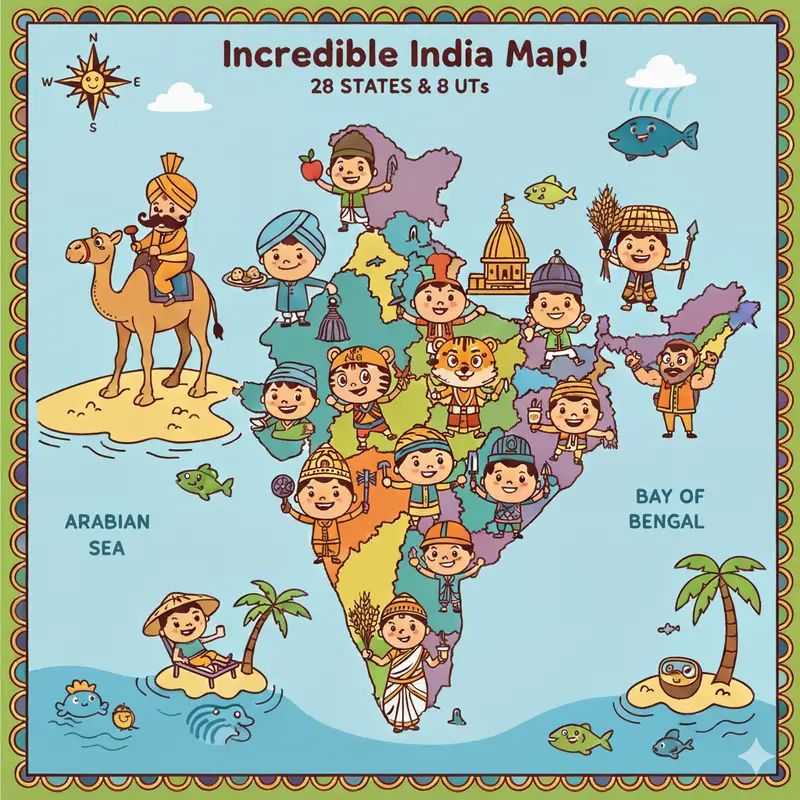Ordinal Numbers Fun Learning Guide with Examples (1 to 100)
Ordinal numbers are essential in understanding positions and sequences. They make everyday tasks easier by helping us describe the order of objects, events, and more. From ranking winners in a race to identifying the 5th book on the shelf, ordinal numbers are all around us. Let’s dive deeper and explore how to teach ordinal numbers in a fun and engaging way, along with examples, differences, and an easy-to-learn list of ordinal numbers from 1 to 100.
What Are Ordinal Numbers?
Ordinal numbers represent the position or order of objects in a series. Words like first, second, third, and twentieth are examples of ordinal numbers. They help describe the sequence, often based on importance, size, or chronology.
Example: Imagine a stack of cupcakes. The one on the top is the 1st, the next one is the 2nd, and so on. Doesn’t that make learning ordinal numbers deliciously fun?
Difference Between Cardinal and Ordinal Numbers
Understanding the difference between cardinal and ordinal numbers is key to mastering this topic.
| Aspect | Cardinal Numbers | Ordinal Numbers |
|---|---|---|
| Definition | Indicates the quantity of objects. | Indicates the position of objects. |
| Examples | 1, 2, 3, 4, etc. | 1st, 2nd, 3rd, 4th, etc. |
| Usage Example | “I have 3 apples.” | “The 1st apple is red.” |
Interactive Idea: Create a simple race with toys or figurines. Assign positions like first, second, and third to the winners. Ask kids to describe each toy’s position in the race.
Also Read: Teaching Kids About Time and Celebrations: A Parent’s Guide
How do you write ordinal numbers?
List of Ordinal Numbers (1 to 100)
Learning ordinal numbers is easier when broken down into manageable parts. Here’s a simple list to get started:
1 to 20:
1st – First,
2nd – Second,
3rd – Third,
4th – Fourth,
5th – Fifth,
6th – Sixth,
7th – Seventh,
8th – Eighth,
9th – Ninth,
10th – Tenth,
11th – Eleventh,
12th – Twelfth,
13th – Thirteenth,
14th – Fourteenth,
15th – Fifteenth,
16th – Sixteenth,
17th – Seventeenth,
18th – Eighteenth,
19th – Nineteenth,
20th – Twentieth.
21 to 100 (Pattern Insight):
From 21st (Twenty-first) onward, ordinal numbers follow a repetitive pattern: the number is written with its suffix (e.g., 22nd (Twenty-second), 23rd (Twenty-third)).
21 to 40 Ordinal Numbers:
21st – Twenty-first
22nd – Twenty-second
23rd – Twenty-third
24th – Twenty-fourth
25th – Twenty-fifth
26th – Twenty-sixth
27th – Twenty-seventh
28th – Twenty-eighth
29th – Twenty-ninth
30th – Thirtieth
31st – Thirty-first
32nd – Thirty-second
33rd – Thirty-third
34th – Thirty-fourth
35th – Thirty-fifth
36th – Thirty-sixth
37th – Thirty-seventh
38th – Thirty-eighth
39th – Thirty-ninth
40th – Fortieth
Also Read: 10 Powerful Tips for Teaching Divisibility Rules to Kids: A Parent’s Guide to Easy Math Mastery
41 to 60 Ordinal Numbers:
41st – Forty-first
42nd – Forty-second
43rd – Forty-third
44th – Forty-fourth
45th – Forty-fifth
46th – Forty-sixth
47th – Forty-seventh
48th – Forty-eighth
49th – Forty-ninth
50th – Fiftieth
51st – Fifty-first
52nd – Fifty-second
53rd – Fifty-third
54th – Fifty-fourth
55th – Fifty-fifth
56th – Fifty-sixth
57th – Fifty-seventh
58th – Fifty-eighth
59th – Fifty-ninth
60th – Sixtieth
61 to 80 Ordinal Numbers:
61st – Sixty-first
62nd – Sixty-second
63rd – Sixty-third
64th – Sixty-fourth
65th – Sixty-fifth
66th – Sixty-sixth
67th – Sixty-seventh
68th – Sixty-eighth
69th – Sixty-ninth
70th – Seventieth
71st – Seventy-first
72nd – Seventy-second
73rd – Seventy-third
74th – Seventy-fourth
75th – Seventy-fifth
76th – Seventy-sixth
77th – Seventy-seventh
78th – Seventy-eighth
79th – Seventy-ninth
80th – Eightieth
81 to 100 Ordinal Numbers:
81st – Eighty-first
82nd – Eighty-second
83rd – Eighty-third
84th – Eighty-fourth
85th – Eighty-fifth
86th – Eighty-sixth
87th – Eighty-seventh
88th – Eighty-eighth
89th – Eighty-ninth
90th – Ninetieth
91st – Ninety-first
92nd – Ninety-second
93rd – Ninety-third
94th – Ninety-fourth
95th – Ninety-fifth
96th – Ninety-sixth
97th – Ninety-seventh
98th – Ninety-eighth
99th – Ninety-ninth
100th – Hundredth
Fun Activity for Kids:
Create a “position scavenger hunt.” Place numbered objects around the room and ask kids to describe their positions using ordinal numbers. For example:
- “The 10th object is a toy car.”
- “The 25th item is a blue book.”
Why Learning Ordinal Numbers Is Fun?
Learning ordinal numbers doesn’t have to be boring! By using activities like races, scavenger hunts, and daily-life examples, children can grasp the concept easily while enjoying the process.
Also Read: Mastering Multiplication: Fast and Fun Strategies for All Ages



